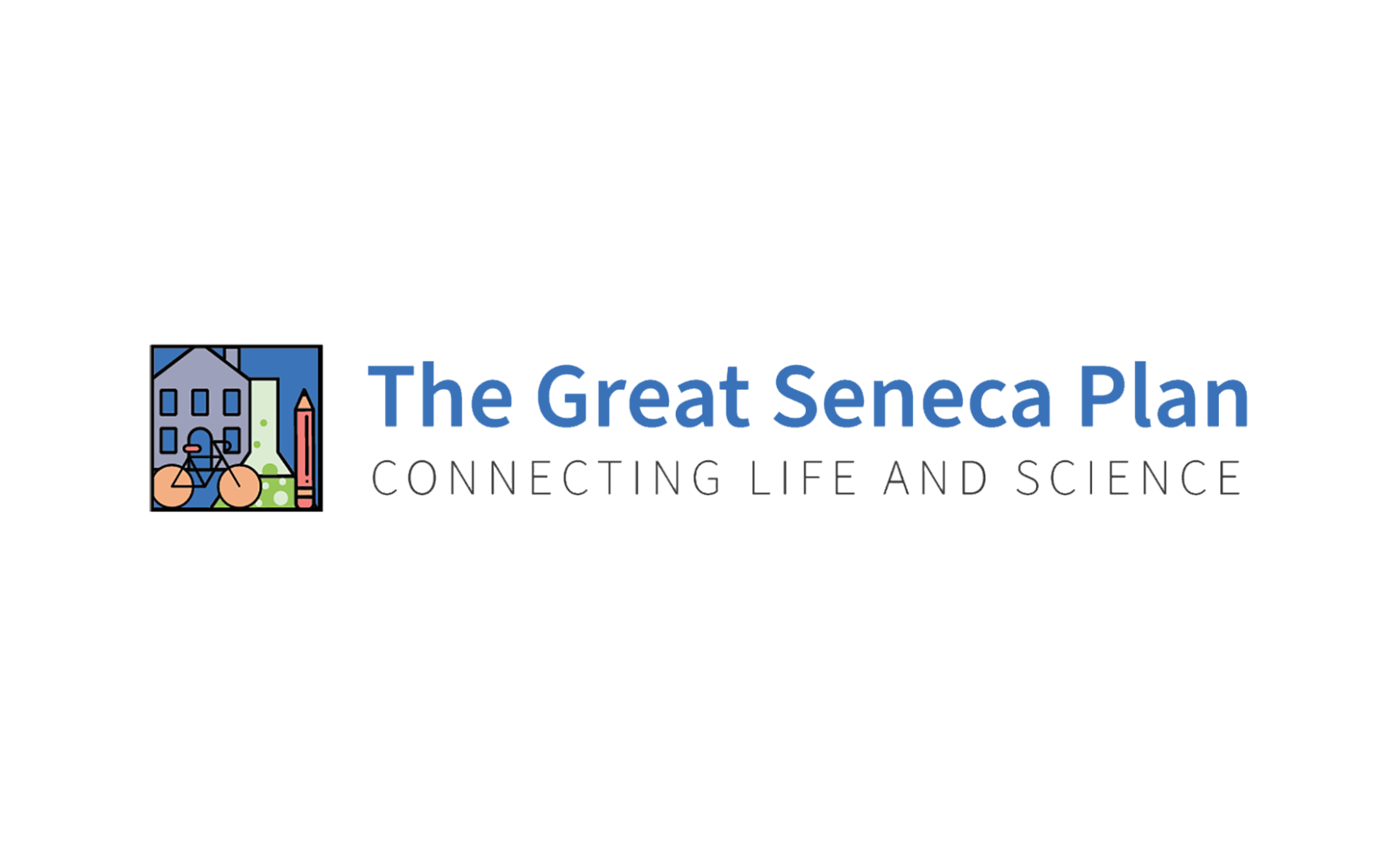Plan focusing on the county’s life sciences industry hub in the heart of the I-270 corridor heads to County Council for review.
WHEATON, Md. – The Montgomery County Planning Board, part of The Maryland-National Capital Park and Planning Commission (M-NCPPC), unanimously approved the Great Seneca Plan: Connecting Life and Science at its April 25 meeting. The plan was developed by the Montgomery County Planning Department, also part of The M-NCPPC, and focuses on strengthening the economic competitiveness of the Life Sciences Center, a thriving hub that is host to a diverse population and premier life sciences, medical, and educational institutions and organizations along the I-270 corridor.
“The Great Seneca Plan’s recommendations will help retain and attract top life sciences industry talent and help grow Montgomery County’s economy,” said Planning Board Chair Artie Harris. “The plan envisions the Life Sciences Center as a Complete Community, where jobs, affordable housing, parks, and a wide variety of services and amenities are within a 15-minute walk, bike ride, roll, or other trip through safe, accessible, and reliable transportation.”
Beyond the Life Sciences Center, the plan envisions a thriving residential neighborhood with local serving amenities and services in the Londonderry and Hoyle’s Addition area, and offers limited recommendations for the Quince Orchard, Rosemont, Oakmont, Walnut Hill, Washingtonian Light Industrial Park, Washingtonian Residential, and Hi Wood areas.
Planning Board members incorporated the community’s feedback it received at its March 14 public hearing and added their own comments to the plan during a series of livestreamed work sessions this spring (March 21, April 4, April 11, April 25). Read the current draft of the plan. The final approved Planning Board Draft will be available online soon and transmitted to the Montgomery County Council to begin its own public review process and vote on the plan.
“The Life Sciences Center should be more of a destination rather than an area of the county where people pass through on wide, fast roads,” said Montgomery Planning Director Jason Sartori. “This plan lays the foundation for life sciences careers to continue to thrive in Montgomery County while making it a place that’s more comfortable for employees and their families to live and enjoy a variety of retail, restaurants, parks, and other activated public spaces— all to make the area more attractive for the workforce and for employers.”
“During the planning team’s two-plus years of analysis of the plan area and community engagement with residents, businesses, and other stakeholders, we kept hearing how the area’s housing, job centers, and public spaces are not as connected as they could be,” said plan leader Maren Hill. “The plan recommends repurposing or reducing travel lanes to make space for more forms of transportation that prioritize the safety and the needs of pedestrians, bicyclists, transit riders and vehicle drivers who live in, work in, or visit the area.”
Key Recommendations of the Great Seneca Plan Planning Board Draft
- Establish a Life Sciences Center Overlay Zone for the entire Life Sciences Center area that supports mixed-use life sciences development and incentivizes the production of affordable and market-rate housing.
- Encourage compact, mixed-use development near transit that integrates and connects life sciences uses with residential uses, retail, and neighborhood services and amenities.
- Right-size roadways and intersections to create a safer and more comfortable environment for people who are walking, rolling, bicycling, riding transit, and driving.
- Advance dedicated transit lanes, including the Great Seneca Transit Network and the Corridor Connectors.
- Repurpose two travel lanes on Key West Avenue to establish a tree-lined promenade for people who are walking, biking, and rolling.
- Repurpose a portion of the Great Seneca Highway right-of-way as a greenway and/or space for development. This open space could provide more than 4.5 acres of new development or publicly accessible open space for active recreation and social gatherings.
- Increase on-site clean energy generation, incorporate strategies to increase building energy efficiency, and incorporate environmentally sustainable development strategies into all developments.
- Facilitate new development and adaptive reuse of existing buildings to meet industry demand based on quantity, type, and size of life science real estate. Encourage development of small- and medium-scale lab space.
- Rezone properties in the Londonderry area to achieve a mixture of uses, including additional residential and local-serving retail uses.
More About the Great Seneca Plan: Connecting Life and Science
The Great Seneca Plan: Connecting Life and Science covers 4,330 acres in the heart of the I-270 Corridor. A large portion of the plan area includes the Life Sciences Center, the county’s premier location for the life sciences and biohealth industries and a thriving economic hub that is host to a diverse population and acclaimed international medical and educational institutions. The Life Sciences Center and adjacent areas contain approximately 9,000 private sector life sciences jobs, more than 60% of the county’s total private life science employment. Recommendations are organized within the themes of the built, social, natural, and economic environments and provide guidance for land use; zoning; urban design; transportation; parks, trails, and public open space; the economy; and the environment.
As part of the plan’s development, Montgomery Planning commissioned a study examining the real estate needs of the life sciences industry and evaluating the compatibility of integrating life sciences with housing and small-scale commercial development. Countywide, there are more than 400 life sciences-related establishments, employing over 40,000 public and private sector workers. The study developed a set of actionable recommendations to support continued growth of the life sciences industry.
View the Montgomery County Life Sciences Real Estate and Land Use Compatibility Study.
Watch Montgomery Planning’s January 25 presentation of the study to the Planning Board.
